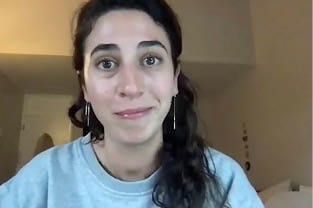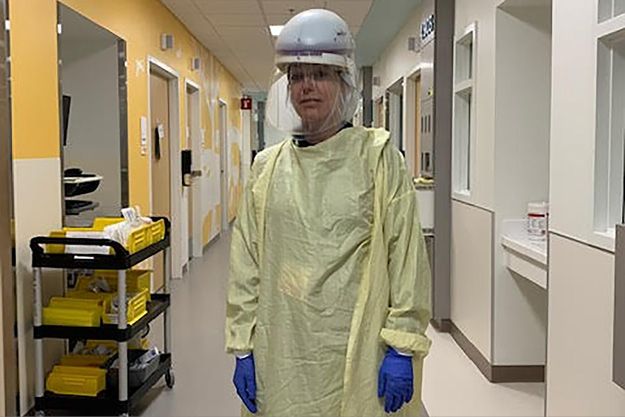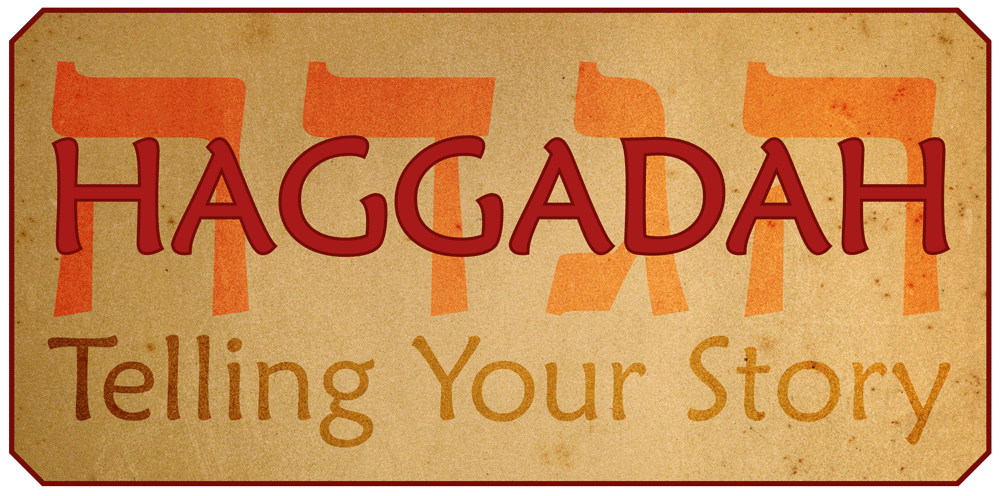We are all living through a major historical event and this is a record of our experiences and actions, a Haggadah of our time.
Haggadah loosely translates to TELLING. These are your healthcare stories. Learn how Washington Jewish Organizations are responding here.
The bonds which connect us as a society are changing, but our Jewish values provide a framework for us to persevere.
Your Stories: Medical Professionals
-
Melanie Edwards, RN

Listen to an interview with Melanie Edwards, a Registered Nurse, below in the video and audio section.
-
Dr. Susanna Block

Listen to an interview with Susanna Block, a pediatrics specialists, below in the video and audio section.
-
Dr. Garrett Scott Hyman

I run a small two doctor medical clinic in Bellevue, WA. We have 5-6 other team members supporting the two physicians. We typically see close to 60 patients per week per physician = > 100 patient encounters per week.
We are non-surgical sports medicine and spinal specialists. We see nearly all ages, ~age 9 to 99, folks of all activity levels -- but we do screen and require our patients have some physical activity goal in mind. We collaborate with many other providers in the community, particularly with orthopedic surgeons, neurosurgeons, primary care providers, physical therapists, chiropractors, massage therapists and acupuncturists. We specialize in "Keeping People Active." We do so by precisely diagnosing a problem and performing targeted injection procedures to spur healing in those who are not responding to more conservative treatments.The novel coronavirus that causes the Covid-19 illness has uprooted the lives of everyone I know. Some more than others. And I live in the beautiful bubble of Mercer Island and so am shielded from observing some of the more dire consequences caused by the economic shutdown. None of my friends have lost their jobs as of yet, and everyone enjoys home and food security. We stay home with our families, and knock on wood, everyone is healthy. I know no one personally infected by the virus. It really doesn't feel personal at all. All I know is I don't have to sit in traffic, I get to work from home, and when I take breaks I see my wife and children more. As my work partner has said, this is the most pleasant pandemic he could imagine.
What changes have I made in everyday life?
I am sleeping a little later, and probably most often going to bed later. I never used to see my kids before work as I used to leave before they woke. Now I see them, at least my younger ones, by 9am. That's nice. I even get a morning hug once in a while. I eat more. Before this situation, I skipped breakfast and lunch on most days. Now I eat 3 squares. I've gained ~5 pounds. I exercise less and sit more. I'm at my computer or on a device more. I watch more television. We usually watch a show each evening.I don't go into work, but I might be working more hours because now I'm trying to save my business. I've learned much more recently about my business out of necessity -- I've had to focus on cutting costs, and taking out a government Paycheck Protection Program (PPP) loan via the Small Business Association. I experienced more stress than usual late March through the end of April, worrying daily about how I will keep my business going and wondering if I'd receive a loan.
How am I staying connected with friends and family?
We're doing fairly well here, with frequent phone calls, FaceTime calls, and Zoom calls. Like all the other Jews I know, we had a 'Zeder' or Zoom seder. We've celebrated birthdays via Zoom. If anything, I've had more contact with family and friends since this Covid-19 crisis.What mitzvahs have I witnessed during this time?
Clearly one of the greatest mitzvahs I've observed has been watching physicians and healthcare teams bravely diving into danger as my colleagues have treated Covid-19 patients. And then it has been so special to watch friends and non-medical colleagues making masks and personal protective equipment for local hospitals and healthcare providers.How am I handling the need to stay home, maintain social distancing, and other restrictions in daily life?
Staying home is a blend of easy and hard. I certainly miss others -- friends, shop owners, people watching in restaurants. I also am rather enjoying my time at home. I'm getting used to this. The restrictions are most frustrating for me when I want to go to a park or to a gym for exercise, to a shopping mall, or to a restaurant or coffee shop.What have I learned from this experience?
I've learned how to practice telemedicine. I actually was the sole physician participating in a Washington State Medical Association (WSMA) webinar describing my experience with telemedicine. I'll copy my notes to the end of this document in case anyone might find them interesting.How has my career been altered?
Good question. I am not clear if my clinic will ever be the same as before. It's entirely possible that the future will involve a combination of telemedicine and in-person medicine. It's possible I will not find it tenable to keep my private practice. For now, as of May 21, 2020, I am hopeful that we will be seeing patients as per normal by the end of the summer.If I am still working in the hospitals right now, what has changed?
I do not practice hospital medicine, but I do perform spinal injections at Overlake. The Overlake Surgery Center is closed. We think it will open again so that I can perform procedures sometime in June.Can I share a unique experience from this time. Yes....see my notes below for the WSMA webinar on telemedicine.
TRANSITIONING TO TELEHEALTH WEBINAR 5/13/2020 WEDNESDAY WITH WSMA
GENERAL OPENING STATEMENT AND COMMENTS:
- Necessity is the ‘mother of invention’
- With regards to reopening, despite all of the well-intentioned advice out there about how we can protect ourselves I’m not yet confident that I know how to protect my patients, my employees and myself
- While our State plan to gradually reopen businesses and public spaces is clever, we’re all a part of one big public health experiment
- Getting back to work and staying safe are in direct conflict
TELEHEALTH BACKGROUND FOR ME:
- I am a PM&R physician and practice owner in Bellevue WA practicing sports, musculoskeletal and spine medicine. I’ve been in private practice since 2003.
- I’d had some prior pre-Covid experience, several visits, with patients who travel for work, to review test results, and had used the Doxy.me platform
- We made the switch completely to Telehealth on Tuesday 3/17/2020, the day after Gov Inslee ordered the closure of restaurants and bars, but before shelter-in-place order on 3/23/2020
- We are ONLY performing TELEHEALTH presently—-20-30% of usual patient volumes
TAKE HOME POINTS:
- 3 T’s of Telehealth —> Time (more), Tech (more), Treasure (less)
- Time: takes more time per visit, not less (other than saving the patient travel time to/from your office), more staff time before and after the visit, more complexity
- Tech: preparedness, backup plans and redundancy on your end, recognize you have little to no control on patient end
- Treasure: less billings, less collections. No procedures, reducing our billing per patient visit in some cases by 50%. SEVERE cash flow reductions. If Telehealth becomes a primary source of patient care, offices will necessarily shrink and/or shared physician office spaces will grow (business opportunity to have a shared space with master cleaning crew).
- Payment parity for an E&M visit DOES NOT EQUAL billing & collections parity
PRACTICING MSK MEDICINE VIA TELEHEALTH
- Taking a HISTORY
- Lose much of the non-verbal communication
- Follow rules for video conferencing
- LIGHTING
- QUIET PLACE
- TEST SYSTEM AHEAD OF CALL
- INTERNET CONNECTION
- ***example: won’t see the grimace on the patient’s face as they twist to show you where their shoulder blade hurts
- Allow for interruptions in attention and focus for doctor and patient
- Notifications that pop-up ((disable if you can)), family members and pets making noise, asking you for homework help)
- The conversation can otherwise proceed much like the in-person visit, but I suggest trying to be even more thorough with questions, even double checking on the important ones, given the loss of non-verbal cues
- Cannot concurrently perform the history and exam as some might do in office
- Certain Follow-Ups are better — Test review for FOLLOW-UPS, perhaps better, screen sharing and discussing test results which can be stressful, may be more comfortable in the comfort of one’s home with loved one’s around for support
PHYSICAL EXAMINATION
- Challenging to perform over video conference, be creative
- PRIVACY, both doctor’s space, and patient’s space
- Inspection possible if patient can adjust camera accordingly to show body region (& not all webcams are created equal)
- Lighting very important
- Very difficult in most cases to observe any subtle swelling, redness
- Awkward for patient, so they have to be willing to work with you
- Privacy for times patient exposes sensitive areas —> difficult for them to take off their shirt for shoulder exam while calling you from their work place
- Palpation
- I’ve been directing patients to perform self-palpation, can be helpful
ASSESSMENT AND PLAN
- Patient’s take more notes (+)
- Can quickly search for and in real-time screen share to show images instead of anatomical (spine/joint) models for education
- I’m able to document my patient visits in real time, finish by end of visit (easier since I don’t have to document as extensive a physical exam and patients expect me to be interacting with the computer as I face the video)
- Post visit my team emails the referrals/orders and schedules follow ups
New patients
- Less diagnostic certainty when seen via Telehealth
- Need more frequent follow ups
What happens if we reopen and then contact tracing implicates a case?
- Do we close the office again?
- We’re concerned about the startup costs, then closing again
We’re worried about PPE access!
- Signing up with Amazon Business
- Searching internet for vendors
- Reaching out to our colleagues
- FEMA approval to purchase from McKesson
- We feel like we’re always one step behind in terms of finding and ordering PPE
LIST OF ADVANTAGES/DISADVANTAGES MOVING FROM IN-PERSON TO TELEHEALTH
- How things are ‘similar’ (not same)?
- How things are ‘different’ (worse?)
- PHYSICAL PAIN FROM ALL THE SITTING!
- MUST GET UP AND MOVE BETWEEN PATIENT ENCOUNTERS!
- OLDER PATIENTS TECHNO-PHOBIC, PREFER OLD-SCHOOL TELEPHONE CALL
- How things are better (for patients? for me?)
- PATIENTS MORE GRATEFUL? PATIENTS APPRECIATE US GIVEN THE ISOLATION?
- PATIENTS OPEN TO TELEMEDICINE MAY REPRESENT A POPULATION SUBGROUP WHO IS IN GENERAL MORE AGREEABLE AND EASIER TO DEAL WITH OVERALL
Telehealth Staffing
- Fewer patients = less staffing needs?!
- However, each patient requires more time just for the administrative work of coordinating a visit
- Anything new takes more time --> patients have understood the old world of scheduling over the phone or internet, showing up to a physicians office, and they understood the mechanics of those visits (i.e. they’d be brought back by an MA who might take their vital signs and the reason for the visit, then they’d wait for a while for the physician to enter, then they’d have the visit involving a discussion with the physician followed by a physical examination followed by further discussion and planning, and then they’d check out with the MA and/or front desk, then they’d leave the office with an understanding of follow up plans)
Telehealth technology issues
- What can go wrong will go wrong
- Wifi bandwidth — doctor and/or patient
- Multiple home users of wifi, several video conference calls at once
- Software failures
- Have a backup plan —> secondary device, cellular data network if wifi is down
- Late patients who don’t get set up confirmed ahead
- LATE CANCELLATIONS due to technology problems
Post-Covid Planning (we’re NOT yet open)
- Priority —> Safety of team, patients
- Goal is minimizing risk (awareness this is counter to the goal of full reopening of the business)
- INCREASED OVERHEAD related to PPE, clinic decontamination
- What if there is a Covid encounter in our small clinic —> do we need to close?
Hope someone finds this interesting, someday.
A socially distanced bear hug,
Garrett S. Hyman, MD, MPH
-
Dr. Elizabeth Kaplan

The pandemic of 2020 has brought me back to the original foundation of doctoring. In the face of a new virus that very little is known about, I have been reminded of how important listening, human connection, empathy and compassion are as I work as a physician. It is these values that help me support my patients when they are scared and feel alone. I witness countless mitzvahs daily as I watch my colleagues in nursing, environmental services, administration, and fellow doctors bravely face unknown risks to take loving care of patients. I also see our community supporting health care workers, small businesses and each other throughout this great challenge. In such a frightening time that is causing so much suffering, it is these moments of kindness that help me move forward each day.
- Elizabeth Kaplan
-
Dr. Henry Kaplan

The pandemic hit just as I was changing from clinical practice to full time cancer research. This has afforded me the opportunity to see the incredible job everyone has been doing in both areas. On the clinical side, everyone from physicians to nurses, to technicians, secretaries, security, administration, and housekeeping have adapted to all kinds of changes while subjecting themselves to risk themselves to make it safer for both our staff and our patients to continue to receive care in the scariest of times. On the research side, everyone has been all in from day one to work on clinical trials to try to come up with effective treatments for this nasty bug. Multiple institutions have banded together to get the studies done as quickly as possible. The community has donated material and money to help us to do this. All of this has truly been a total community effort.
- Henry Kaplan
Washington State Jewish Historical Society is dedicated to discovering, preserving, and disseminating the history of the Jews of Washington state and promotes interest in and knowledge of the life, history, and culture of the Jewish people and communities through publications, exhibits, displays, speakers, tours, and performance.

